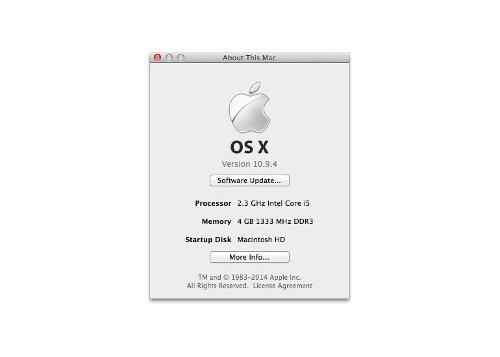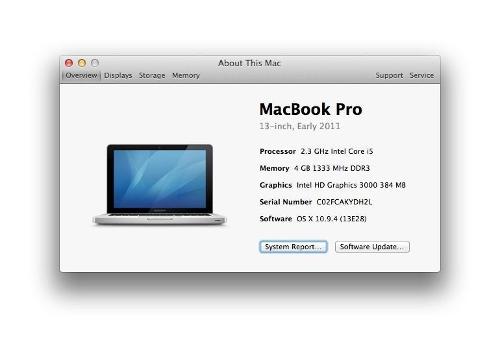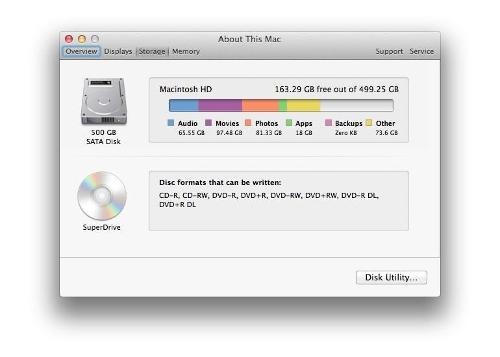Apple CEO Tim Cook recently told customers, the company believed "in telling you up front exactly what's going to happen to your personal information," but computer experts say that's not the case with a novel feature that automatically charges the company users' searches and placement info.
Apple Inc. has begun collecting search query data from the destination bar of its Safari Web browser, according to multiple experts who have analyzed the code. In addition, Apple is collecting the location of users who conduct a search and those queries in the "Spotlight" search function in OS X Yosemite, a fact buried in its terms of inspection and repair.
Yosemite users realized over the weekend that Apple also sends any search made through Safari’s address bar back to its own servers, no matter what search provider its users pick out. Apple is by default collecting every search query entered into its updated Spotlight feature, which awaits for answers on a user’s computer as easily as Web results. The new feature also collects the user’s location information by default, and those who desire to opt-out must individually turn off related settings in both Spotlight and the Safari browser.
Apple's new default data collection is not performed with its users' "clear and conspicuous" consent, according to Dr. Ben Edelman, associate professor at the Harvard Business School. He told International Business Times that Apple’s method of informing customers in a "hidden" disclosure was not in step with what it recently told clients.
“The estimate that [Safari] would pick up this data no matter what you induce as your default search engine is particularly ironic in light of Apple's recent comments on customer privacy,” Edelman said. “These actions seem particularly incongruous to that.”
The new policy stands in complete contrast to Apple’s recent statements regarding user policy, as it enabled default encryption into its latest iPhone and iPad software following the dispersion of a number of photos from celebrities’ iPhones that were stolen from the company’s cloud online storage service.
“we honor your privacy and protect it with strong encryption, plus strict policies that govern how all data is covered,” Apple CEO Tim Cook said in a missive to customers on the seclusion policy in September, which the company published in full on its internet site. “We believe in telling you up front exactly what’s going to happen to your personal information and asking for your permission before you partake in it with us. And if you switch your mind later, we make it easy to quit dealing with us.”
Apple owns the feature turned on by default in its search engine, most of its users will not infer the kind of data collection that’s being conducted, or how to end it, according to Dr. Eric Burger, a computer science prof at Georgetown University. As technology companies recognize the value in information about their users, they increasingly collect it to improve their products or advertisements, he stated.
“This isn’t out of the average, but that doesn’t get it in good order,” Burger said. Apple did not react to multiple requests for commentary on the issue.
Experts state that the iPhone maker is trying to capitalize on its popularity to start gathering the sort of user data that companies like Google have made profitable, only not in a way that’s particularly open and honest to its users. In fact, it’s a “privacy nightmare,” according to computer scientists and Syracuse University professor Dr. Kevin Duh.
“This information is really valuable, and Apple is competing with Google on many fronts,” Du said. “This is one area where they can break into into [the big data] business, but that’s exactly the improper mode to manage it.”
Browsers in a number of existing operating systems do not currently charge a user’s search anywhere other than the intended search engine, Dr. Duo said, having carried on extensive research on the topic. The only time a search that intended for Google or Bing would give way to a third-party was when browsers were infected by Spyware or otherwise compromised.
Apple’s new policy was first identified by GitHub user and Plausible Labs CEO Landon Fuller, who also produced a software designed to freeze the data collection. He also produced a website to spread the software.
“Mac OS X has always respected user privacy by default, and Mac OS X Yosemite should too,” Fuller said on the website. “Since it doesn’t, you can use the code to the left to disable the parts of Mac OS X which are invasive to your privacy.”
There are alternative web-browsers for OS X Yosemite, such as the Mozilla Foundation’s Firefox web browser, which the company sounded out “does not automatically send search queries to Mozilla."
Yosemite users realized over the weekend that Apple also sends any search made through Safari’s address bar back to its own servers, no matter what search provider its users pick out. Apple is by default collecting every search query entered into its updated Spotlight feature, which awaits for answers on a user’s computer as easily as Web results. The new feature also collects the user’s location information by default, and those who desire to opt-out must individually turn off related settings in both Spotlight and the Safari browser.
Apple's new default data collection is not performed with its users' "clear and conspicuous" consent, according to Dr. Ben Edelman, associate professor at the Harvard Business School. He told International Business Times that Apple’s method of informing customers in a "hidden" disclosure was not in step with what it recently told clients.
“The estimate that [Safari] would pick up this data no matter what you induce as your default search engine is particularly ironic in light of Apple's recent comments on customer privacy,” Edelman said. “These actions seem particularly incongruous to that.”
The new policy stands in complete contrast to Apple’s recent statements regarding user policy, as it enabled default encryption into its latest iPhone and iPad software following the dispersion of a number of photos from celebrities’ iPhones that were stolen from the company’s cloud online storage service.
“we honor your privacy and protect it with strong encryption, plus strict policies that govern how all data is covered,” Apple CEO Tim Cook said in a missive to customers on the seclusion policy in September, which the company published in full on its internet site. “We believe in telling you up front exactly what’s going to happen to your personal information and asking for your permission before you partake in it with us. And if you switch your mind later, we make it easy to quit dealing with us.”
Apple owns the feature turned on by default in its search engine, most of its users will not infer the kind of data collection that’s being conducted, or how to end it, according to Dr. Eric Burger, a computer science prof at Georgetown University. As technology companies recognize the value in information about their users, they increasingly collect it to improve their products or advertisements, he stated.
“This isn’t out of the average, but that doesn’t get it in good order,” Burger said. Apple did not react to multiple requests for commentary on the issue.
Experts state that the iPhone maker is trying to capitalize on its popularity to start gathering the sort of user data that companies like Google have made profitable, only not in a way that’s particularly open and honest to its users. In fact, it’s a “privacy nightmare,” according to computer scientists and Syracuse University professor Dr. Kevin Duh.
“This information is really valuable, and Apple is competing with Google on many fronts,” Du said. “This is one area where they can break into into [the big data] business, but that’s exactly the improper mode to manage it.”
Browsers in a number of existing operating systems do not currently charge a user’s search anywhere other than the intended search engine, Dr. Duo said, having carried on extensive research on the topic. The only time a search that intended for Google or Bing would give way to a third-party was when browsers were infected by Spyware or otherwise compromised.
Apple’s new policy was first identified by GitHub user and Plausible Labs CEO Landon Fuller, who also produced a software designed to freeze the data collection. He also produced a website to spread the software.
“Mac OS X has always respected user privacy by default, and Mac OS X Yosemite should too,” Fuller said on the website. “Since it doesn’t, you can use the code to the left to disable the parts of Mac OS X which are invasive to your privacy.”
There are alternative web-browsers for OS X Yosemite, such as the Mozilla Foundation’s Firefox web browser, which the company sounded out “does not automatically send search queries to Mozilla."
Automatically Collects Safari Searches, User Location In OS X Yosemite
Apple CEO Tim Cook recently told customers, the company believed "in telling you up front exactly what's going to happen to your personal information," but computer experts say that's not the case with a novel feature that automatically charges the company users' searches and placement info.
Apple Inc. has begun collecting search query data from the destination bar of its Safari Web browser, according to multiple experts who have analyzed the code. In addition, Apple is collecting the location of users who conduct a search and those queries in the "Spotlight" search function in OS X Yosemite, a fact buried in its terms of inspection and repair.
Yosemite users realized over the weekend that Apple also sends any search made through Safari’s address bar back to its own servers, no matter what search provider its users pick out. Apple is by default collecting every search query entered into its updated Spotlight feature, which awaits for answers on a user’s computer as easily as Web results. The new feature also collects the user’s location information by default, and those who desire to opt-out must individually turn off related settings in both Spotlight and the Safari browser.
Apple's new default data collection is not performed with its users' "clear and conspicuous" consent, according to Dr. Ben Edelman, associate professor at the Harvard Business School. He told International Business Times that Apple’s method of informing customers in a "hidden" disclosure was not in step with what it recently told clients.
“The estimate that [Safari] would pick up this data no matter what you induce as your default search engine is particularly ironic in light of Apple's recent comments on customer privacy,” Edelman said. “These actions seem particularly incongruous to that.”
The new policy stands in complete contrast to Apple’s recent statements regarding user policy, as it enabled default encryption into its latest iPhone and iPad software following the dispersion of a number of photos from celebrities’ iPhones that were stolen from the company’s cloud online storage service.
“we honor your privacy and protect it with strong encryption, plus strict policies that govern how all data is covered,” Apple CEO Tim Cook said in a missive to customers on the seclusion policy in September, which the company published in full on its internet site. “We believe in telling you up front exactly what’s going to happen to your personal information and asking for your permission before you partake in it with us. And if you switch your mind later, we make it easy to quit dealing with us.”
Apple owns the feature turned on by default in its search engine, most of its users will not infer the kind of data collection that’s being conducted, or how to end it, according to Dr. Eric Burger, a computer science prof at Georgetown University. As technology companies recognize the value in information about their users, they increasingly collect it to improve their products or advertisements, he stated.
“This isn’t out of the average, but that doesn’t get it in good order,” Burger said. Apple did not react to multiple requests for commentary on the issue.
Experts state that the iPhone maker is trying to capitalize on its popularity to start gathering the sort of user data that companies like Google have made profitable, only not in a way that’s particularly open and honest to its users. In fact, it’s a “privacy nightmare,” according to computer scientists and Syracuse University professor Dr. Kevin Duh.
“This information is really valuable, and Apple is competing with Google on many fronts,” Du said. “This is one area where they can break into into [the big data] business, but that’s exactly the improper mode to manage it.”
Browsers in a number of existing operating systems do not currently charge a user’s search anywhere other than the intended search engine, Dr. Duo said, having carried on extensive research on the topic. The only time a search that intended for Google or Bing would give way to a third-party was when browsers were infected by Spyware or otherwise compromised.
Apple’s new policy was first identified by GitHub user and Plausible Labs CEO Landon Fuller, who also produced a software designed to freeze the data collection. He also produced a website to spread the software.
“Mac OS X has always respected user privacy by default, and Mac OS X Yosemite should too,” Fuller said on the website. “Since it doesn’t, you can use the code to the left to disable the parts of Mac OS X which are invasive to your privacy.”
There are alternative web-browsers for OS X Yosemite, such as the Mozilla Foundation’s Firefox web browser, which the company sounded out “does not automatically send search queries to Mozilla."
Yosemite users realized over the weekend that Apple also sends any search made through Safari’s address bar back to its own servers, no matter what search provider its users pick out. Apple is by default collecting every search query entered into its updated Spotlight feature, which awaits for answers on a user’s computer as easily as Web results. The new feature also collects the user’s location information by default, and those who desire to opt-out must individually turn off related settings in both Spotlight and the Safari browser.
Apple's new default data collection is not performed with its users' "clear and conspicuous" consent, according to Dr. Ben Edelman, associate professor at the Harvard Business School. He told International Business Times that Apple’s method of informing customers in a "hidden" disclosure was not in step with what it recently told clients.
“The estimate that [Safari] would pick up this data no matter what you induce as your default search engine is particularly ironic in light of Apple's recent comments on customer privacy,” Edelman said. “These actions seem particularly incongruous to that.”
The new policy stands in complete contrast to Apple’s recent statements regarding user policy, as it enabled default encryption into its latest iPhone and iPad software following the dispersion of a number of photos from celebrities’ iPhones that were stolen from the company’s cloud online storage service.
“we honor your privacy and protect it with strong encryption, plus strict policies that govern how all data is covered,” Apple CEO Tim Cook said in a missive to customers on the seclusion policy in September, which the company published in full on its internet site. “We believe in telling you up front exactly what’s going to happen to your personal information and asking for your permission before you partake in it with us. And if you switch your mind later, we make it easy to quit dealing with us.”
Apple owns the feature turned on by default in its search engine, most of its users will not infer the kind of data collection that’s being conducted, or how to end it, according to Dr. Eric Burger, a computer science prof at Georgetown University. As technology companies recognize the value in information about their users, they increasingly collect it to improve their products or advertisements, he stated.
“This isn’t out of the average, but that doesn’t get it in good order,” Burger said. Apple did not react to multiple requests for commentary on the issue.
Experts state that the iPhone maker is trying to capitalize on its popularity to start gathering the sort of user data that companies like Google have made profitable, only not in a way that’s particularly open and honest to its users. In fact, it’s a “privacy nightmare,” according to computer scientists and Syracuse University professor Dr. Kevin Duh.
“This information is really valuable, and Apple is competing with Google on many fronts,” Du said. “This is one area where they can break into into [the big data] business, but that’s exactly the improper mode to manage it.”
Browsers in a number of existing operating systems do not currently charge a user’s search anywhere other than the intended search engine, Dr. Duo said, having carried on extensive research on the topic. The only time a search that intended for Google or Bing would give way to a third-party was when browsers were infected by Spyware or otherwise compromised.
Apple’s new policy was first identified by GitHub user and Plausible Labs CEO Landon Fuller, who also produced a software designed to freeze the data collection. He also produced a website to spread the software.
“Mac OS X has always respected user privacy by default, and Mac OS X Yosemite should too,” Fuller said on the website. “Since it doesn’t, you can use the code to the left to disable the parts of Mac OS X which are invasive to your privacy.”
There are alternative web-browsers for OS X Yosemite, such as the Mozilla Foundation’s Firefox web browser, which the company sounded out “does not automatically send search queries to Mozilla."









